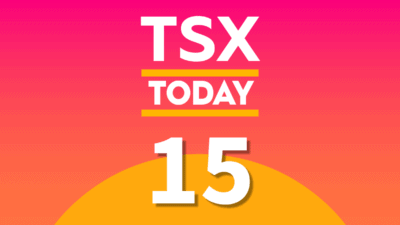The rejection of the Presidential Permit for Keystone XL is not only bad news for TransCanada Corporation (TSX:TRP)(NYSE:TRP), but for the pipeline industry as a whole.
Keystone was one of four major pipelines proposed to export Canadian crude, and the rejection not only emboldened climate-change activists, but also underscored the fact that declining oil prices and falling long-term production estimates are reducing the need for multiple export pipelines.
One thing is clear: pipeline rejections and delayed regulatory processes overwhelmingly benefit one industry—crude by rail. Canadian crude-by-rail export volumes have increased nearly 10 times over the past three years, and the Keystone rejection means this growth will continue at least until 2019 or 2020 when (and if) some of the other pipelines are approved.
Canadian National Railway Company (TSX:CNR)(NYSE:CNI) should be a beneficiary of this growth because it has direct access to the important Gulf Coast refining complex.
Economics for rail should improve
It is more or less accepted that pipeline is the more economical (and safer) way to transport crude oil across large distances. A pipeline shipment of a barrel of oil to the Gulf Coast from Hardisty, Alberta, costs around $7-11, whereas a rail shipment can cost between $12-20.
This means that rail is only economical when there is a large spread between Western Canadian Select crude, and West Texas Intermediate or Mexican Maya crude. Mexican Maya crude is almost identical to Western Canadian Select heavy crude, but it is priced at a premium because it is waterborne with better market access. If this premium is high enough to justify the cost of rail, it is economical for producers to ship their crude down to the Gulf Coast.
While spreads narrowed over the summer as new pipelines and refineries came online, they are once again widening and are currently sitting above where they were last year at this time and above the year-to-date average. As production continues to grow and new pipelines are slow to come online, spreads should remain supportive of crude by rail. Keystone’s rejection will only help this.
At the same time, Canadian National Railway has recently cut freight rates on crude shippers by as much as 25%, dropping rates for shippers into the $13-15 per barrel range.
Pipeline capacity will not be able to handle growing supply
Oil sands production is expected to grow fairly substantially through to 2019, with nearly one billion barrels per day of supply set to come online, according to the Canadian Association of Petroleum Producers (CAPP). It is important to note that these are key projects for major integrated players with strong balance sheets and, as a result, they are highly certain.
In their recent release, CAPP projected that Canadian crude movements by rail could grow further from the 185,000 b/d transported in 2014. They see this growing to 250,000 b/d by 2016 and 350,000 b/d by 2017. This growth is because Canadian oil sands production will continue to grow through this time frame, but only two smaller pipeline projects are expected to come online in this period. Rail will make up the difference.
CAPP estimated that if Keystone XL was not approved, those rail volumes would see a massive boost from 350,000 b/d in 2017 to as high as 600,000 b/d in 2018. In late 2018, Kinder Morgan’s Trans Mountain pipeline is slated to come online, and Enbridge’s Northern Gateway will come online in 2019.
Should either of these projects be rejected, rail will have a very prominent role until 2020, when TransCanada’s Energy East is expected to come online, and likely afterwards.
CN Rail has the infrastructure to take crude to the Gulf Coast
Keystone XL was slated to connect Alberta heavy oil with the massive complex of heavy oil refining capacity on the Gulf Coast. Without Keystone, growing volumes will need to make it to this market until (and if) more export pipelines come online after 2018.
CN Rail has direct access to the Gulf Coast (and is the only Canadian railroad with this access) and also has access to multiple offloading terminals on the Gulf Coast that provide CN access to numerous Gulf Coast refineries.
Direct access to the region and excellent terminal access gives CN the infrastructure to transport the growing volumes that Keystone will not be able to transport.







